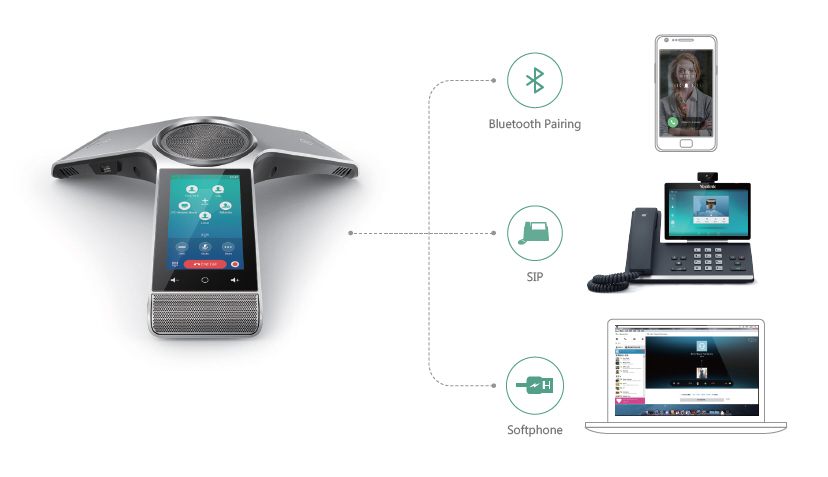Introduction
In the ever-evolving landscape of communication technology, Voice over Internet Protocol (VoIP) phone systems have emerged as game-changers for businesses and individuals alike. But just like any other technology, the effectiveness of a VoIP phone system hinges significantly on its quality assurance measures. This article explores The Importance of Quality Assurance in Your New VoIP Phone System, shedding light on why it’s crucial to implement stringent QA protocols to ensure optimal performance.
What is a VoIP Phone System?
Defining VoIP Technology
Voice over Internet Protocol (VoIP) refers to the method of delivering voice communications and multimedia sessions over Internet Protocol (IP) networks, such as the internet. This technology allows users to make voice calls using a broadband internet connection instead of a https://anotepad.com/notes/379nk9nt traditional phone line.
How Does a VoIP Phone System Work?
A VoIP phone system converts your voice into data packets that are transmitted over the internet, rather than through circuit-switched telephone lines. When you speak into a VoIP phone, your voice is digitized and sent over the network, where it is reassembled at the receiver's end.
Key Features of VoIP Phone Systems
- Cost Efficiency: Significantly lower costs compared to traditional phone systems. Flexibility: Can be used anywhere with an internet connection. Multimedia Support: Allows for video calls, conference calling, and more.
The Role of Quality Assurance in VoIP Systems
Understanding Quality Assurance in Technology
Quality Assurance (QA) is a systematic process that ensures products meet specified requirements and standards. In the context of VoIP systems, quality assurance involves testing various aspects to ensure seamless operation.
The Importance of Quality Assurance in Your New VoIP Phone System
Implementing robust QA procedures can prevent issues like poor call quality, dropped calls, or security vulnerabilities that can hamper communication efficiency.
Common Challenges Facing VoIP Implementations
- Latency Issues Jitter Packet Loss
Why You Need Quality Assurance for Your VoIP Phone System
Enhancing Call Quality and Reliability
One of the primary goals of QA in a new VoIP phone system is to enhance call quality. Consistent testing helps identify any potential issues that could lead to disruptions or poor audio clarity during important calls.
Achieving Compliance with Standards
Quality assurance also ensures compliance with industry standards such as ITU-T recommendations for audio quality. This compliance guarantees that your system will work well under various conditions.
Improving User Experience
A well-tested VoIP phone system contributes positively to user experience. Users expect clear audio without interruptions; therefore, ensuring that these expectations are met should be paramount.
Components of Quality Assurance in VoIP Systems
1. Performance Testing
This involves simulating real-world usage scenarios to assess how well the system performs under various conditions.
1.1 Load Testing
Load testing helps determine how many simultaneous calls the system can handle before performance degrades.
1.2 Stress Testing
Stress testing goes beyond normal operational capacity to find breaking points in your system.
2. Security Testing
Security is critical when implementing any new technology. Ensuring that sensitive data remains protected from unauthorized access must be part of your QA strategy.

2.1 Vulnerability Assessments
Conduct regular assessments to identify weaknesses in your system's security protocol.
2.2 Penetration Testing
Simulate attacks on your network to see how well it holds up against malicious attempts.
3. Usability Testing
Usability testing focuses on how easy and intuitive the new VoIP phone system is for end-users—an essential part of quality assurance that often gets overlooked.
3.1 User Feedback
Soliciting feedback from actual users can provide insights into areas needing improvement.
3.2 Training Sessions
Organizing training sessions can help familiarize users with the new features available on their new systems.

Implementing a Quality Assurance Strategy for Your New VoIP Phone System
Step-by-Step Guide to QA Implementation
Define Objectives: What do you want your QA process to achieve? Select Tools: Choose software tools tailored for VoIP testing. Create Test Cases: Develop specific scenarios reflecting both typical and extreme use cases. Execute Tests: Perform tests regularly at different stages. Analyze Results: Use metrics and analytics tools for data analysis. Continuous Improvement: Adapt based on findings; incorporate feedback loops into your process.Metrics for Measuring Quality in Your VoIP Phone System
Key Performance Indicators (KPIs)
Tracking KPIs helps gauge the performance of your VoIP system effectively:
- Call Setup Time Call Completion Rates Voice Clarity Score Network Latency Measurements
Tools Used for Quality Assurance in VoIP Systems
Testing Software Options
There are numerous tools available specifically designed for testing and ensuring quality assurance within your new VoIP phone systems:

| Tool Name | Description | |--------------------|----------------------------------| | Wireshark | A network protocol analyzer | | SIPTester | Focuses specifically on SIP traffic | | PRTG Network Monitor| Monitors bandwidth usage |
Best Practices for Maintaining Quality Assurance
Regular Updates and Maintenance
Keeping software up-to-date ensures you benefit from improvements made by developers regarding performance and security vulnerabilities.
User Training Programs
Regular training programs help users adapt quickly and utilize all features effectively while providing valuable feedback on usability issues.
Frequently Asked Questions (FAQs)
Q1: Why is call quality important in a business environment?
A1: Poor call quality can lead to misunderstandings, decreased productivity, and ultimately affect customer relationships negatively—hence its importance cannot be overstated!
Q2: How often should I perform quality assurance checks?
A2: Regular checks are recommended; ideally monthly or quarterly depending on usage volume—more frequently if you notice issues arising!
Q3: Can poor network conditions affect my QA tests?
A3: Absolutely! It’s vital to conduct tests under varying network conditions to get an accurate picture of performance across different scenarios.
Q4: What happens if I neglect quality assurance?
A4: Neglecting QA may lead not only to technical failures but also diminished user trust—a costly consequence worth avoiding!
Q5: Is it necessary to involve end-users in testing phases?
A5: Yes! Users provide invaluable insights regarding functionality issues or usability challenges that may not show up during technical evaluations alone!
Q6: What role does security play in my overall QA strategy?
A6: Security must be integrated into all facets of QA since vulnerabilities could compromise sensitive communications—an unacceptable risk!
Conclusion
In conclusion, understanding The Importance of Quality Assurance in Your New VoIP Phone System cannot be overstated—it’s essential for optimizing performance while safeguarding communication integrity within organizations today! By investing time into developing robust QA processes alongside effective strategies tailored towards continuous improvement post-deployment; businesses will reap long-term benefits including enhanced user satisfaction coupled with reliable service delivery!
In this fast-paced digital age filled with opportunities offered via advanced technologies like VoIP, ensuring top-quality interactions shouldn’t just be an afterthought—it should stand as one main pillar upon which successful businesses aim their focus moving forward!